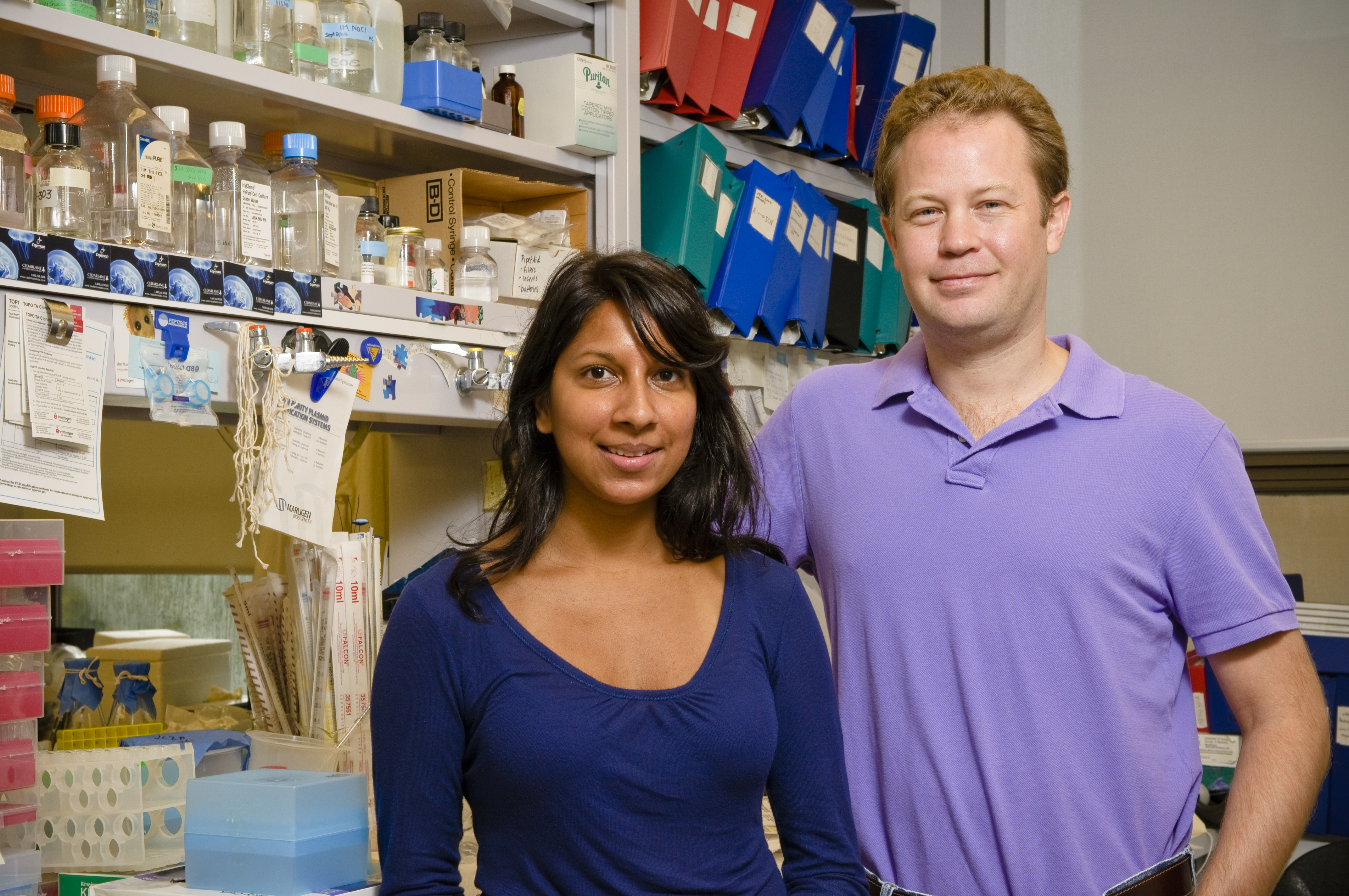Message Control: How To Present Research Results At A Conference
By Jim Oldfield
Most graduate students will never have to present their research in a global forum. Some, however, are thrust before hundreds of scientists expecting a cohesive presentation of new findings—a daunting challenge. “One always speaks badly when one has nothing to say,” wrote Voltaire. Having something to say, alas, doesn’t mean speaking well.
Doctoral student Génève Awong and postdoctoral fellow Dr. Ross La Motte-Mohs study T cell development in the lab of Sunnybrook Research Institute (SRI) senior scientist Dr. Juan Carlos Zúñiga-Pflücker. Awong recently presented her research in Amsterdam at the International Workshop on Humanized Mice, and at the 2008 ThymUS conference in Puerto Rico. La Motte-Mohs has given dozens of talks near and far in his eight years at SRI. Here, they share what they’ve learned about how to present.
How do you prepare for a presentation?
Awong: For me, all my slides have to be clear and uncluttered. And I try to tell a story: I put the slides in a certain order that I think people will follow. Then, when presenting, I try to make sure everything I say is accurate, by choosing words carefully. You can say something one way and it can end up with a meaning different from what you intended, so you have to be precise. Those are the key things for conveying the message.
La Motte-Mohs: I agree. It’s also important to first figure out the story you want to tell, and have supporting slides that focus on that particular story. Another thing to consider is your target audience. How specialized is their background knowledge? Are they a group of 500 or 10? Will they expect an interactive talk or a short presentation followed by questions and answers? But I think the key thing in any presentation is making sure you know how to get from one slide to the next—the segue. Everything that’s on the slide you can look at and go from there, but you have to link slides to move the story forward. That’s more useful than memorizing your data or exact wording.
What shouldn’t people do when presenting?
Awong: Talk too fast, or flip slides quickly. Sometimes people try to present too much information, and it becomes hard to process. They tell too many stories about their project instead of choosing just one and focusing on it.
La Motte-Mohs: Quality is better than quantity, so focus on one project that has a cohesive story. I also find it’s important to discuss a central problem that the research addresses, and then tailor your story around it. And there’s a very simple formula to do that: state the major problem or question, your hypothesis and methods, and then show your data. Conclude with a summary and discuss implications.
What about dealing with stress?
La Motte-Mohs: I think one of the easiest ways to alleviate nerves is to focus on the first five slides, and figure out what to say to lead into the talk. Having confidence about those slides helps the rest fall into place. And, practise. Physically stand in a presentation room, move the slides and use a laser pointer. Time yourself.
Awong: In Amsterdam, I was nervous. My first couple of slides, I was a little shaky, but once I started talking about my data, it was natural, because I know my data and I was just saying what’s there, what I’ve seen. Then I got into it.
Do you have strategies for answering audience questions?
La Motte-Mohs: It’s important to listen to what people are saying, and the best way to do that is to keep silent until they’re done asking. Especially because sometimes they give you a way out in their question. They might say, “Did you consider this hypothesis . . .?” and expound on it, providing an answer. Some questions you just can’t answer; and for those, you shouldn’t invent something that could be wrong. I’ve seen people do that, and it calls their data into question.
Awong: The Q&A period can be a little scary for a student, when it’s an audience mainly of scientists and you don’t know what they’re going to ask. If you don’t know the answer, it’s fine to say that and suggest discussing it further after the talk. But often the questions are beneficial because they force you to think about something new—they offer an outside point of view and you may get an idea for an experiment.






